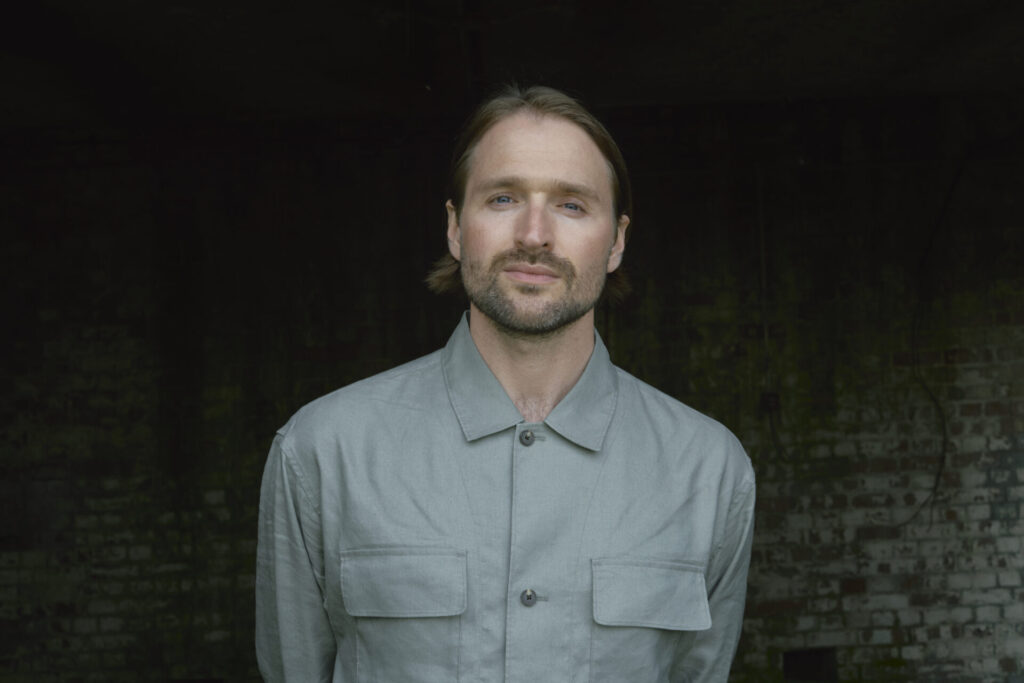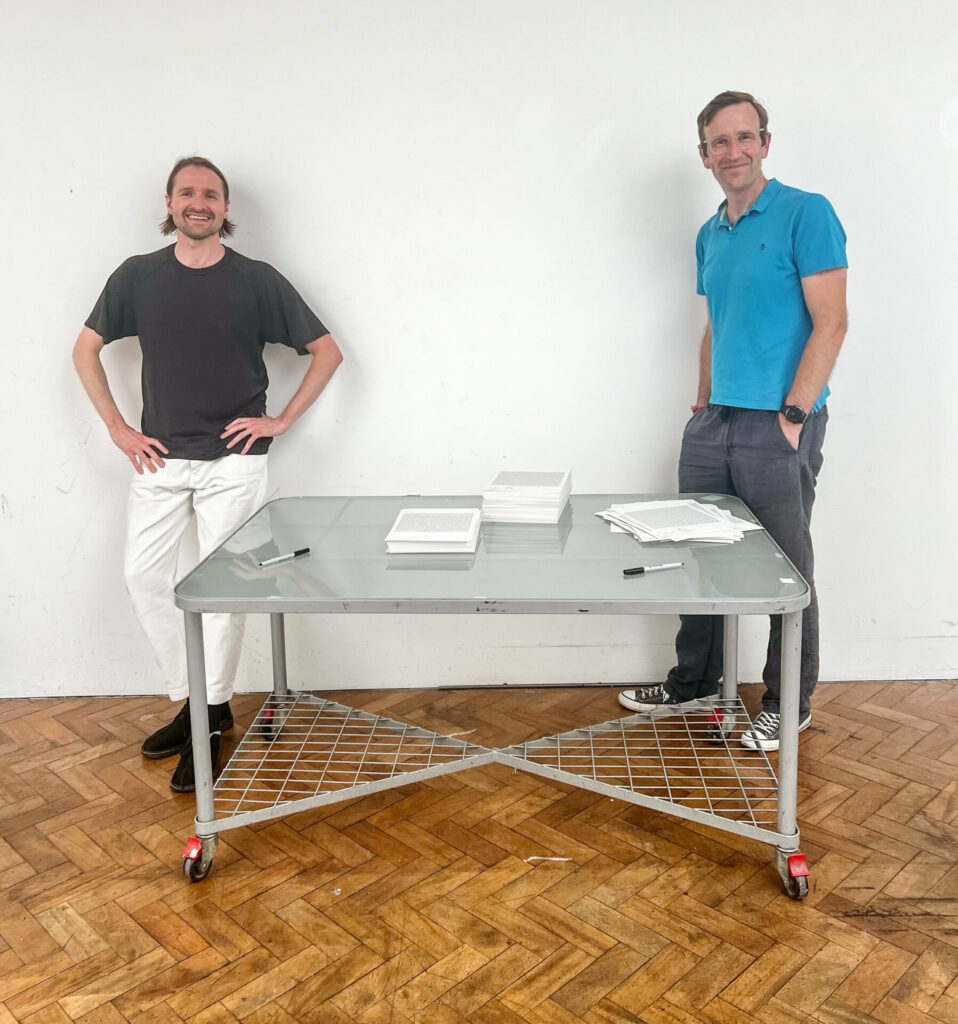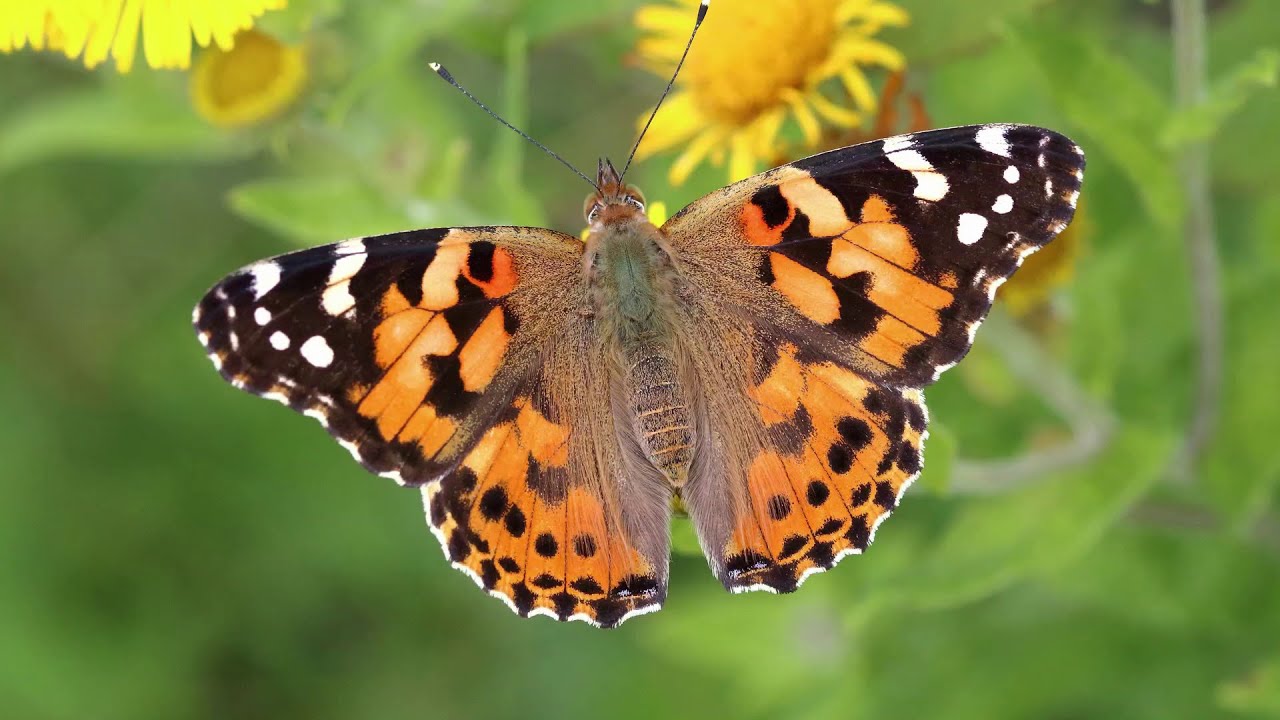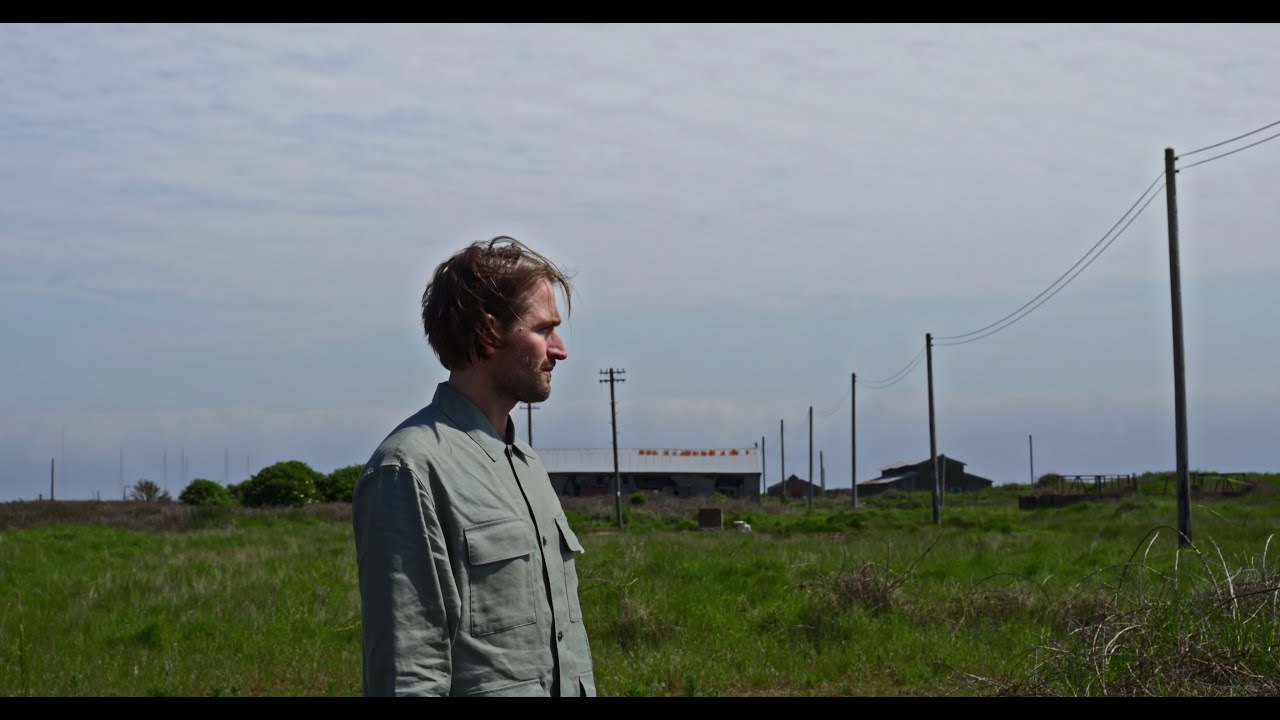Music writers. Who needs ’em? We recently had the opportunity to get musician Hayden Thorpe and the acclaimed writer Robert Macfarlane together. We left the two to have a conversation about their individual and joint practice, without any interference from us.
Formerly of Wild Beasts, Thorpe has just released his third solo album Ness, which consists of songs based on words taken from Macfarlane’s book of the same name. It’s inspired by Orford Ness, a ten-mile long shingle split on the coast of Suffolk, which was a former Ministry Of Defence site during both World Wars and the Cold War. It’s since been acquired by the National Trust and left to re-wild.
Macfarlane’s Ness was itself a collaboration, with artist Stanley Donwood. After he read it, Thorpe collaborated with Macfarlane at the Kendal Mountain Literature Festival, where the idea first developed that Thorpe make an album from Macfarlane’s prose. Further collaboration came with Propellor Ensemble, who contribute orchestral parts, and whose leader Jack McNeill also plays clarinet across the record. Kerry Andrew composed and sang all of the choral arrangements and performed some spoken word.
Thorpe and Macfarlane will also appear together live for a show at King’s Place in February. For tickets, and further information, click here.
Robert Macfarlane interviews Hayden Thorpe
Early on, when we first began exploring this collaboration, as a short-notice, mostly improvised performance at the Kendal Mountain Festival, you described what you’d written to me as ‘desert music’. I’ve never been able to get the phrase out of my head. What did you/do you mean by it?
Well, my first encounter with anything to do with Orford Ness was your book with Stanley Donwood. From what I could tell from Stanley’s gothic etchings and your words, you were depicting a vast plain. A place which felt exposed and haunted. An English, atomic desert. I wondered what that would sound like.
I’ve long had an on-going romance with what I call “desert music”. My phone is full of voice notes called ‘Desert Song 23’ or ‘Dirt Music 14’. My mum is Australian and my very earliest memory is of driving across the Great Western Desert. There was a pilot strike going on and we were forced to drive the width of the continent. I’m almost certain that is where my longing to make desert music comes from. Something glancing, once felt and forever replayed.
Morricone’s soundtracking of Westerns are very synonymous with the sound of the desert and I referenced him a lot when making Ness. The clarinet plays the “spirit lines”, as Morricone does with the ocarina. Kerry Andrew’s soaring soprano weaves in and around me while I go about singing cowboy songs on my baritone guitar. The parallels between the story of the Wild West – the bullet beating the bow and weapons development on Ness, were not lost on me. They’re both about win-at-all-costs mastery over nature.
Had you ever been to that Suffolk coastal fringe before? The site of Martello Towers and Roman forts, WWII radar stations and UFO sightings, a fringe patrolled before us by M.R. James, W.G. Sebald and, of course, Mark Fisher, Justin Barton and the Otolith Collective. Ghosts, paranoia, militarisation, secrecy, fissile knowledge and fugitive meaning – it’s all happening there, almost so densely as to be over-determined. What were your feelings about working on and in this landscape, so far, so diagonally distant from the hard-rock north west England of your home?
As you know, I was midway through making a completely different album when we first began working on Ness. Your writing was already a big influence on what I was making. I was seeking a re-belonging in Cumbria having left the city. In truth, my process of working at that time had gotten very claustrophobic and intense. To go back to the places of my childhood and re-feel everything was a lot. So, when Ness appeared, I had an alternate way forward. I just couldn’t resist.
If somebody had of told me at the beginning of last year that this would be the album I’d make, I would have thrown them out the house. What can I say? Something took hold. When you’re making work about other living beings – by that I mean things outside of yourself, a different life force pushes you on. The story of Ness is an easy one to empathise with. Ness did bad things, bad things happened to Ness, mistakes were made and bad decisions followed. Later, came redemption and healing. To become the voice of Ness was a release from the burden of making work about myself. Almost all modern songs are first-person singular. Just because I didn’t want to be the subject doesn’t mean I didn’t want to make songs. Even though they’re not about me, I still find the songs personal.

I know much of the ultra-intense work for this album happened above a meat-processing yard in a warehouse in east London. Given the site-specificity of the work you’ve/we’ve created, can you say a little about how this second place of its making (i.e. after the Ness itself) leaked into the music (or didn’t)?
I gave myself a month to make this record. It ended up taking 10. A madness took hold for sure – a definite succumbing to perfectionism. The potential of the music only revealed itself as I went along. I pulled the thread and it kept on coming until the plan I made was all undone. I had to stitch an entirely new plan together.
Like you say, all of this took place in a series of studios above a kebab meat supplier on an industrial estate in Tottenham. Many, many boxes of poultry exposed to the pavement and exhaust pipes. Too much leakage.
The building was once a bullet factory, so I’m told. Once I heard that, I became even more convinced of what I was making.
It is a sonically ambitious record, one that might have been too expensive to make 20 years ago. But equipment is more affordable for the everyman now. I feel fortunate enough to have learnt my trade at a time when making an album meant doing it the old-fashioned way, meticulously, in a studio, following strict codes of engineering practice. That knowledge leaked in. I wasn’t fully aware that I knew how to mike an orchestral bass drum, or trombone, or how to edit a vocal for maximum drama. Having your potent words already in place meant a lot of space was freed up for me to tell the story through sound.
There are five ‘figures’ in both book and album: He, She, They, It and As. They’re these weird, sloshing interspecies beings who gradually converge on the Ness and eventually transform The Armourer and his ritual into something electrified, wild and, though not benevolent, at least not calamitous. Which of the five did you feel most musically/imaginatively drawn to, and why?
I was really taken with the character He. I peacocked that one. For whatever reason, from the moment I read the pages I heard a dirty Rolling Stones kind of track. Slightly off-kilter, slack, leaning back, spurs on cockerel-feet or on cowboy boots. I think I’ve looked for alter-egos to live out that kind of instinctual id energy in music for a long time. I guess this song being called He granted me licence to engage with it like that.
The great thing is, the choruses are sung in a high register, quite effeminately, as if the character is morphing between two states. I can’t help but become a bit silly when channelling He, I wanted it to be about the absurdity of maleness. The nuclear missile that resides at Ness is itself a ridiculous phallic prop. In a way, the whole enterprise of building bigger and bigger bombs at Orford Ness was a result of a kind of hyper-machismo.
Part of the pleasure to me of collaborating with you has been watching you make a 360-degree artwork out of this project; live performance, album, spoken word, beer (?!) and, of course, the album-object itself, with lyric sheet and that (to me) startling, literally iconic colour-scheme and cover image. I put this album cover alongside [2021 album] Moondust For My Diamond and they could hardly seem further apart. Tell me about how album art (e)merges in your mind with-from music?
You answered my question by telling me that the words for Ness co-evolved with Stanley Donwood’s images. That’s totally fascinating to me because they do seem to be deeply interwoven. I’ve told you this before, but Stanley’s illustrations of the hagstones on the album cover are to me the cartilage rings from a windpipe belonging to Ness. I merely lent my windpipe to be a voice for this uncanny creature. One whole organism made up of a many, many other organisms.
Strangely enough, the cover of Moondust is in-fact a hair from Sigmund Freud’s couch which had been forensically extracted and made into an image. It’s the work of my good friend Olly Chanarin. Perhaps the link between the two artefacts, hagstone and hair, is their past lives. They seek resolution somehow, as do all songs. Perhaps therein lies the merging. The pleasure for me in return is to have such a rich source of insight and inspiration, both in your words and your friendship.
Hayden Thorpe interviews Robert Macfarlane
Of all of your books, Ness seems to me to be the most surrealist. It feels psychedelic in its depiction of Orford Ness. I think that’s what made it such an enticing prospect for me, I could dream alongside you. I’d love to know how the book came to be, what was the process behind this epic poem of yours?
Well, Ness came into being as a form of ‘dreaming alongside’, but with the site itself as the co-dreamer. I’ve been going to Orford Ness for more than 20 years now; there’s no place in England, really, which has gripped me more or drawn me back as often. I still remember getting ferried over for the first time, back in 2004 or so, and the boatman turning to me and saying with a grin on his face: “The first rule of the Ness is; don’t believe anything anyone tells you about the Ness.” That line – half Pahlaniuk, half Plato; dismantling its own certitude even as it affirmed it – has never left me, and become a sign under which to read the shingle-shifting, truth-fissioning properties of the untrue island. In the end, after writing about it in non-fiction (in The Wild Places), filming and sound-recording on it, then writing a jazz opera set on it which we performed in The Armoury as the biggest North Sea storm I’ve ever known blew in, flooded the performance space and provided the most extraordinary percussion unit any show could have wished for…I decided that a wild kind of prose-poetic-mystery-play was about the best technology of detection and representation that was within my powers to point at the Ness. I was also obsessed by the likeness of the mossed-up, algae-greened interior of one of the abandoned ‘Pagoda’ labs with the ‘Green Chapel’ from Gawain and the Green Knight, a poem that’s always been important to me. Out of that one affinity (across six centuries) sprang the seed-gene of Ness. I took the idea to Stanley [Donwood] and asked if he wanted to make a book with me about it, and from that emerged the hybrid weird-ness (eeri-ness; random-ness) of the book you know. Stanley’s art and my words co-evolved; his punk-pastoral, gonzo-gothic art is inextricable from the book, and by extension, I sense, from your music.
You have a canon of songwriting credits to your name with various amazing artists. I’ve always felt your work is lyrical in essence. I know you to be a very trusting and encouraging collaborator – essential kindling for song craft. I’m wondering, what does it feel like on the other side? As in, what sensations emerge when you hear your words sung and become song?
It’s one of the purest thrills I know. There’s a W.H. Auden line about always feeling, in the company of scientists, “like a shabby curate in a roomful of bishops”. That’s honestly how I feel about hanging around musicians. They just…you just…transform things. Those weird instruments and objects and decks and dials all have the air of the sacristy to me; incomprehensible but powerful. Or if we want to lose the Christian metaphor (let’s do so); I feel like the guy who shovels the dung into the alchemist’s laboratory, and somehow out of the poop pops gold. I have also found, in the time I’ve spent watching (my) words become music in the moment — I mean, literally right in front of my ears — that I’m watching artistic creation happen in the most volatile, dynamic and gripping way I know. Watching someone write is fundamentally boring. Pen, paper, scritch-scratch. Move stuff around. Try this, try that. Revise obsessively over months and years. Give me drying paint any day. But music…well, there’s more than a touch of the angelic to it; and especially so when your Buckley-Somerville-vespers voice is at work.
We began making the music for Ness in November of 2022. The war in Ukraine was still in its infancy and the horrors of war in Gaza had not yet erupted. Obviously the book was published before either of these conflicts arose. A feeling of outrage and unease has filled the minds of many. We’re having conversations that we thought we wouldn’t need to have again.
The tale of Ness is essentially about nature overcoming or winning back the laboratories in which weapons were perfected for death. I’ve always felt Ness to be an anti-war statement. How do you see the work within the current climate?
A hard, good, needed question. I think I can only responsibly answer it by recounting the comment of my friend Raja Shehadeh, a Palestinian lawyer, human rights activist and writer, when I took him to the Ness. Some months earlier we had walked together in the West Bank, in the heavily militarised and zoned landscape beyond the perimeter of the Palestinian town of Ramallah. Barbed wire, rifle cartridges gleaming in the dust, a sense of intense surveillance, stressful encounters with settlers. Checkpoints. Miles like none I’d ever walked. When Raja came to walk with me in England, I remember we stopped at the edge of a farmer’s field where the farmer had left unploughed and walkable the line across his land along which a footpath/right of way ran. Raja was amazed at the care taken to preserve access, rather than to deny it. Then we went to the Ness, and walked among its crumbling structures, each archiving a different phase of conflict, a different era of work to perfect the physics of death. At the end, as we got the ferry back over the river, to the tea-shops of Orford village, Raja turned to me and said: “I dream one day of my own landscape becoming a museum of war rather than a theatre of war. But I feel it is an impossible dream.”
You were influential in bringing in Jack McNeill and Kerry Andrew for the beautiful orchestral and choral arrangements on the album. I think you had a hunch about the sonic potential of this lineup even before I did. I get the sense that you long felt Ness had a life beyond the page, is that true?
I had always imagined Ness performed. No, that’s not quite right; I had always imagined it as performance. Partly due to its deep, distant roots in the ‘jazz opera’ I mentioned earlier (brought into being by Duncan Kent of the Trust; and Arnie Somogyi, the great double bassist), and partly because while writing Ness I always had the medieval “mystery” or “miracle” plays in mind; the York Cycle, the Chester Cycle – among the earliest performed forms of theatre in Europe. These “cycles” often focussed on a single event (the murder of Abel, say, or the Last Judgement, much as Ness focusses upon the ritual/mass being carried out by the Armourer); involved many participants, often from the communities in which they were performed, and introduced ‘living tableaux’ into sacred services, as if the cartouches in ancient maps had suddenly sprung to writhing life. The miracle plays also involved, much as your album does, a thrilling, bewildering gallimaufry of styles and tones. So now — to see what you, Jack and Kerry have done with and to the Ness (and I mean the place here, not the book), and had done to you by it, and to be on the eve of performing your Ness-of-many-voices on the site itself, with a nuclear bomb as a member of the audience, and people gathering from all over the world to be ferried across the river to the island of secrets, well – it’s a blast.
Ness by Hayden Thorpe is out now via Domino




